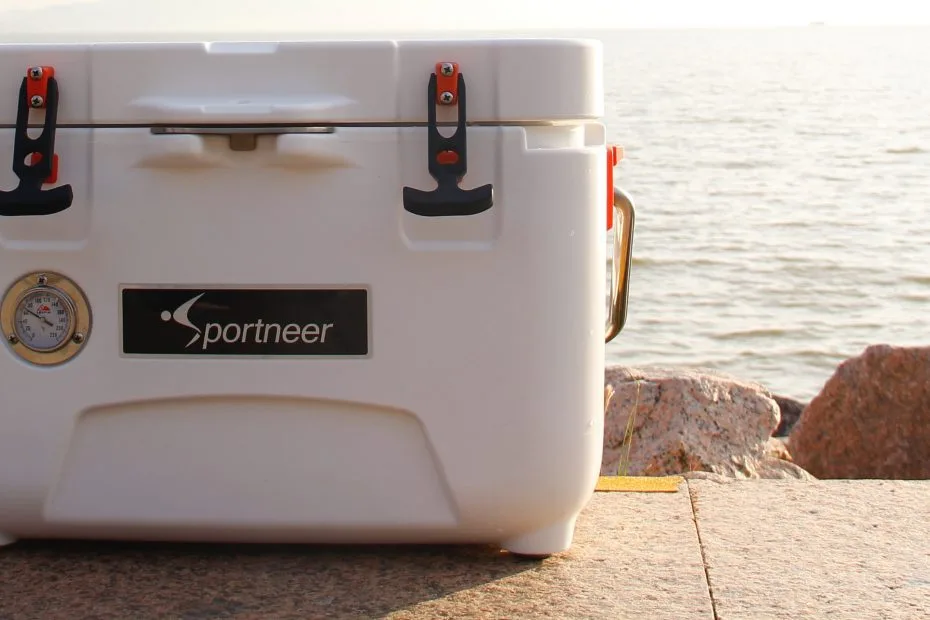You can incubate tempeh in a warm place in your home. A closet with a drop light, a place where heat collects, such as a high kitchen shelf or warm attic. Or you can make a simple incubator. Get a Styrofoam cooler with the long sides slanted inward at the bottom. Your tempeh containers should fit wedged in so that the bottom of the tempeh containers are about 3 inches below the cooler’s rim. The two long sides should firmly support the tempeh container, leaving a gap at either end for air circulation. Tape the room thermometer to the center inside lid of the cooler. Place a heating pad in good condition flat on the bottom of the cooler. Run the cord out through a small cut in the rim so the cooler lid sits down flat. For safety and to avoid overheating, do not fold the heating pad over on itself and keep the cloth cover on at all times. Make sure the tempeh container is firmly supported and can’t fall down on the heating pad. Keep the incubator in a safe place away from household traffic, children, pets, and toxic or flammable materials.
Now turn the heating pad on to the proper setting. The setting for the cookie sheet may be higher than the setting for the cake pan. Securely place in your tempeh container. You’ll need to check the temperature often until you become familiar with how your incubator responds to the heat produced by the growing tempeh and variations in room temperature. At room temperature of 65°-72°F you may need to turn off the heat and possibly crack the lid a little at 18 hours. At 73°-80°F you may need to do this at 15 hours. An automatic timer used to turn off lights and small appliances can be used to help control your incubator. When incubation is finished, be sure to turn your incubator off, as you would any small appliance. Disassemble it for added safety.
A tempeh incubator should maintain a temperature of 85°F for 26-30 hours (85°-93° is best). Don’t incubate in anything small or airtight because the culture needs oxygen to grow and some “breathing space” to discharge excess heat and humidity. A couple of practice runs with only a thermometer in your incubator before making tempeh is a good idea to check for temperature fluctuations that may cause problems.
Photo by Sandrene Zhang on Unsplash
